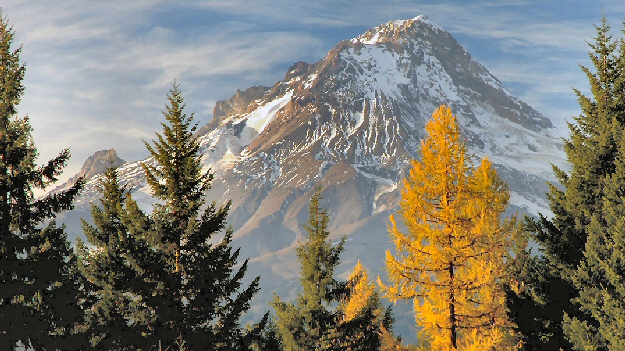Montana forest shows carbon-sequestration potential of thinned acres
Posted: May 25, 2017Source: Treesource.org

“When it comes to carbon sequestration and climate change adaptation, we can have our cake and eat it too,” says Andrew Larson, forest ecologist at the University of Montana in Missoula and author of the new study. (U.S. Forest Service photo)
The planet’s forests are a significant piece of the conversation about not only the impacts of climate warming, but also about strategies for sequestering carbon – thereby removing it from Earth’s atmosphere.
In his traveling presentation on the “Era of Megafires,” U.S. Forest Service researcher Paul Hessburg talks about the exponential growth of 100,000-acre-plus wildfires caused, in part, by climate change.
Thin the forests and reintroduce smaller ground fires, he counsels, or the march of these megafires will not only continue but expand. Increasingly, Hessburg’s presentation shows, these massive fires claim every tree in a wide path – forgoing the mosaic of burned and unburned forests once the norm, and leaving no source of seed for a new forest.
At the recent Mass Timber Conference in Portland, nearly 800 architects, engineers, wood products manufacturers, foresters, and environmental and social justice activists touted the use of wood for high-rise offices and condominium developments.
Wooden skyscrapers are one way to sequester carbon and avoid the climate-altering impacts associated with the manufacture and use of steel and concrete, they said.
And now comes research by forest ecologists at the University of Montana, The Wilderness Society and the Forest Service showing that early thinning in a lower-elevation larch forest in northwestern Montana helped produce a more resilient stand of large-diameter, thick-barked trees that can better withstand climate change.
Importantly, when the thinned stand was compared with an adjoining unthinned stand, both forests sequestered the same amount of carbon. There was no advantage to leaving the smaller trees in place.
In fact, removing the small-diameter trees and understory had many societal and economic advantages, in addition to the ecological advantages of fostering the growth of larger, healthier trees and a lessened wildfire danger, the researchers advised.
Ultimately, the thinned forest could produce wood for building products, while the unthinned stand’s trees would remain too small to make thinning viable. And its resilience to fire could, in turn, help protect nearby communities and other forest tracts from the advance of a future summer’s wildfires.
Here is a closer look at the research coming out of northwestern Montana. We welcome your thoughts on the findings, and any questions you have for the research team.
We start with a story from Science magazine on the project, and a link to the research paper itself.
By Ula Chrobak/Science Magazine
Forests are feeling the heat. In places like the American West, rising temperatures and drought mean less water for trees, sometimes shriveling swaths of woodland. Now, scientists have found that thinning early in forest growth creates tougher trees that can endure climate change. What’s more, these thinned forests can suck carbon out of the air just as fast as dense forests.
“When it comes to carbon sequestration and climate change adaptation, we can have our cake and eat it too,” says Andrew Larson, forest ecologist at the University of Montana in Missoula and author of the new study. “It’s a win-win.”
